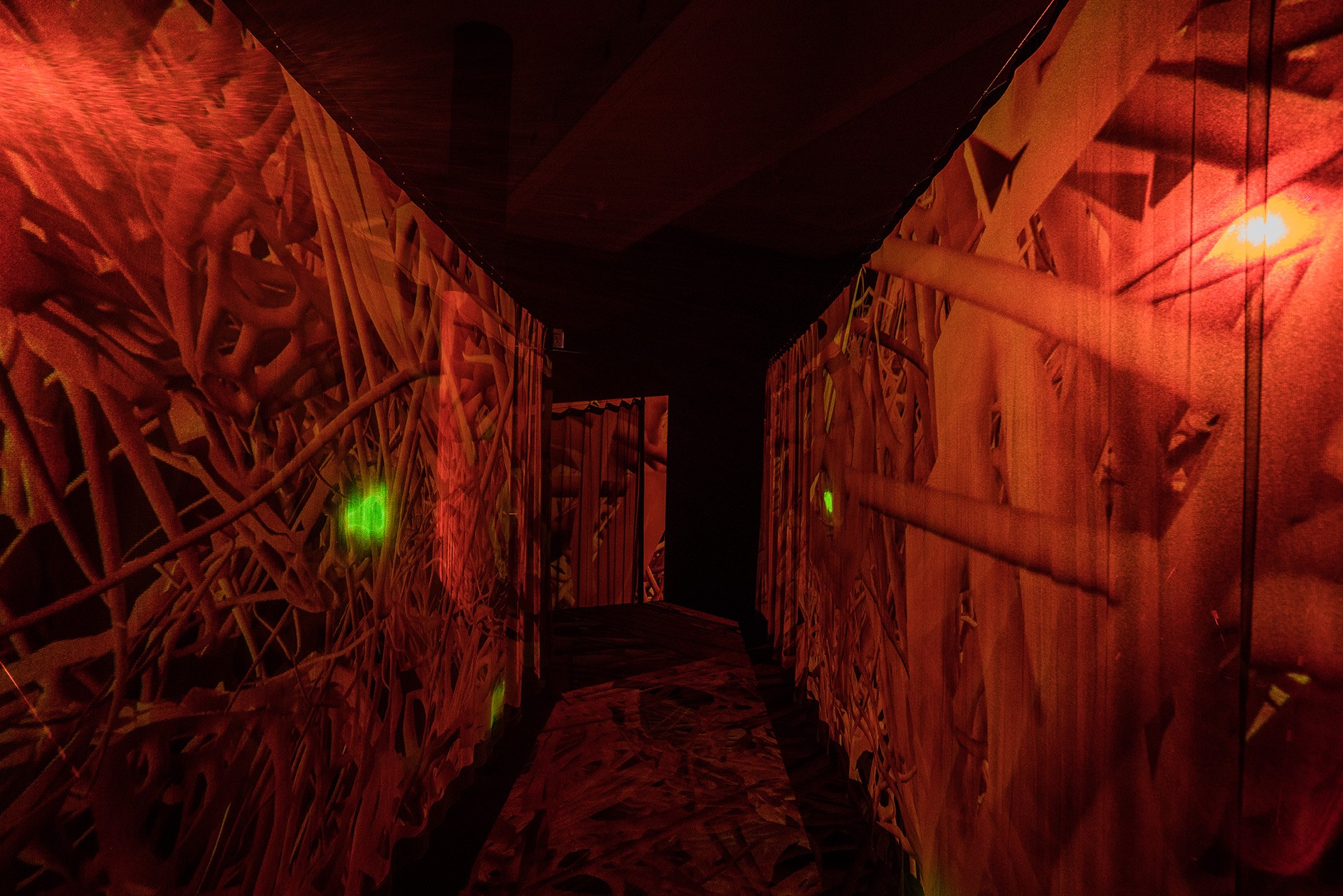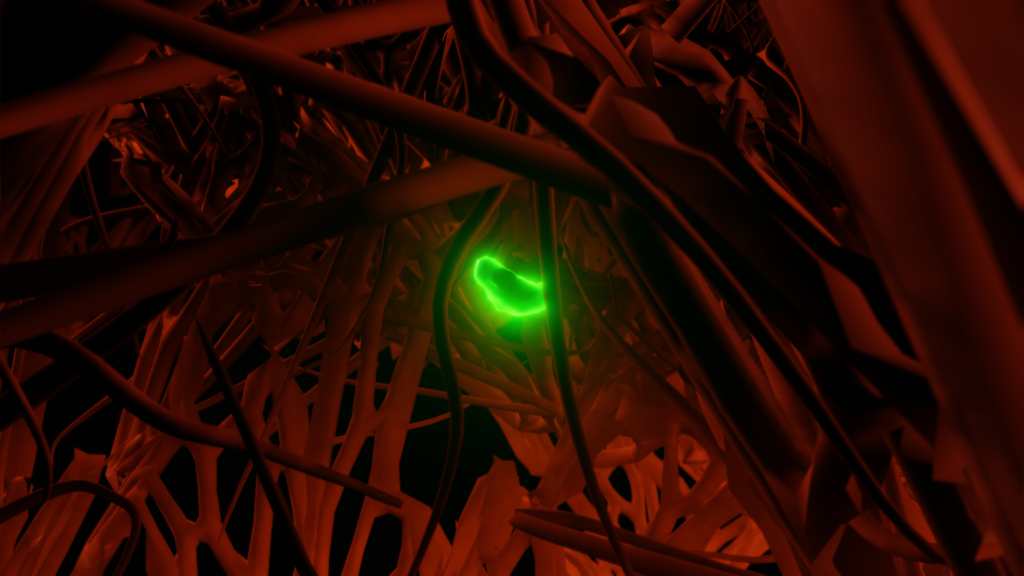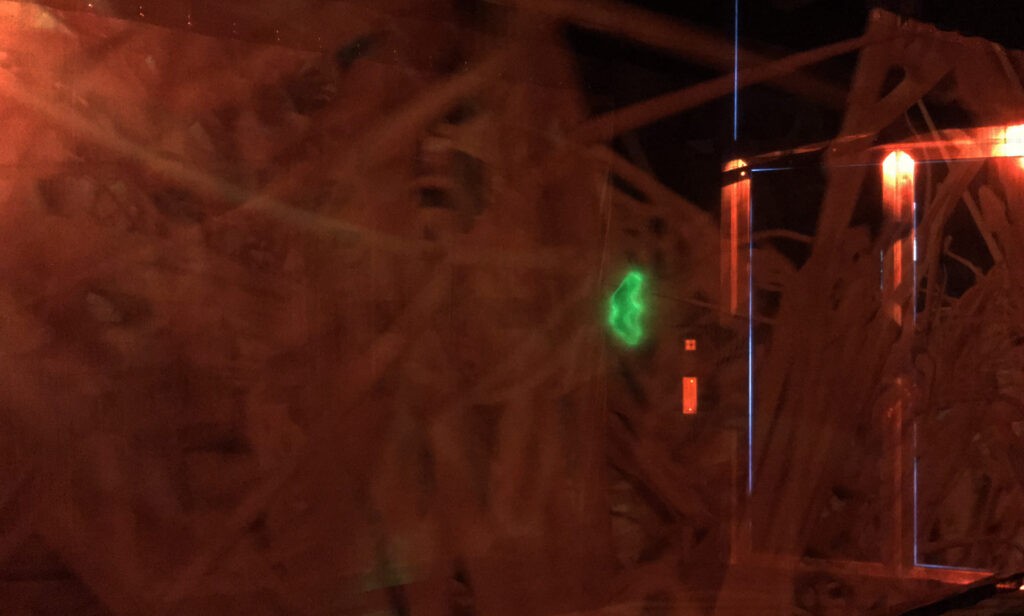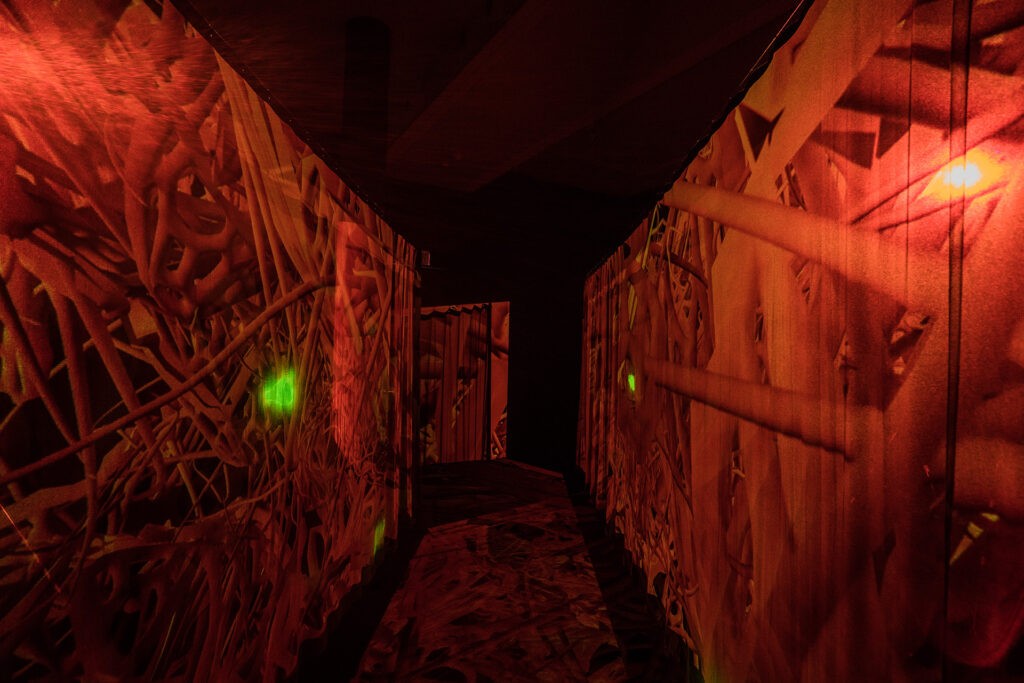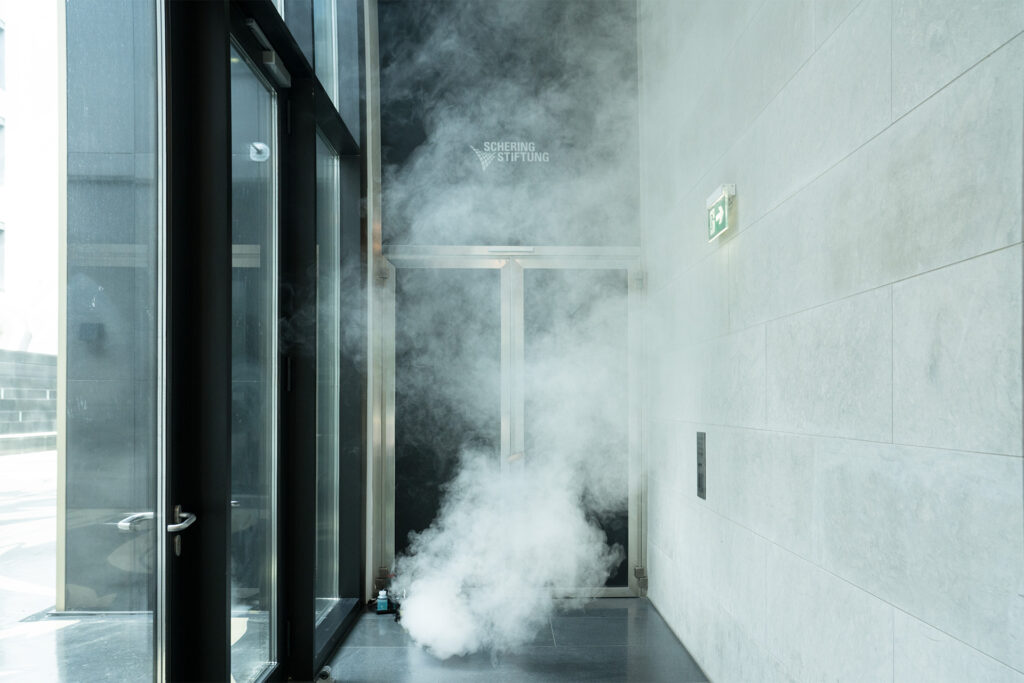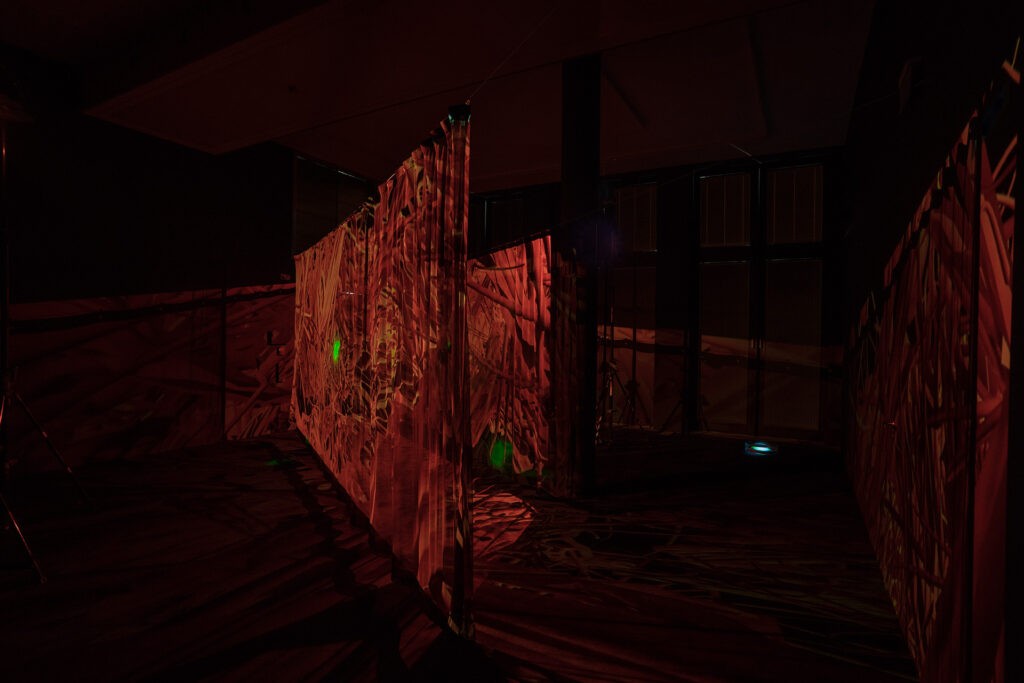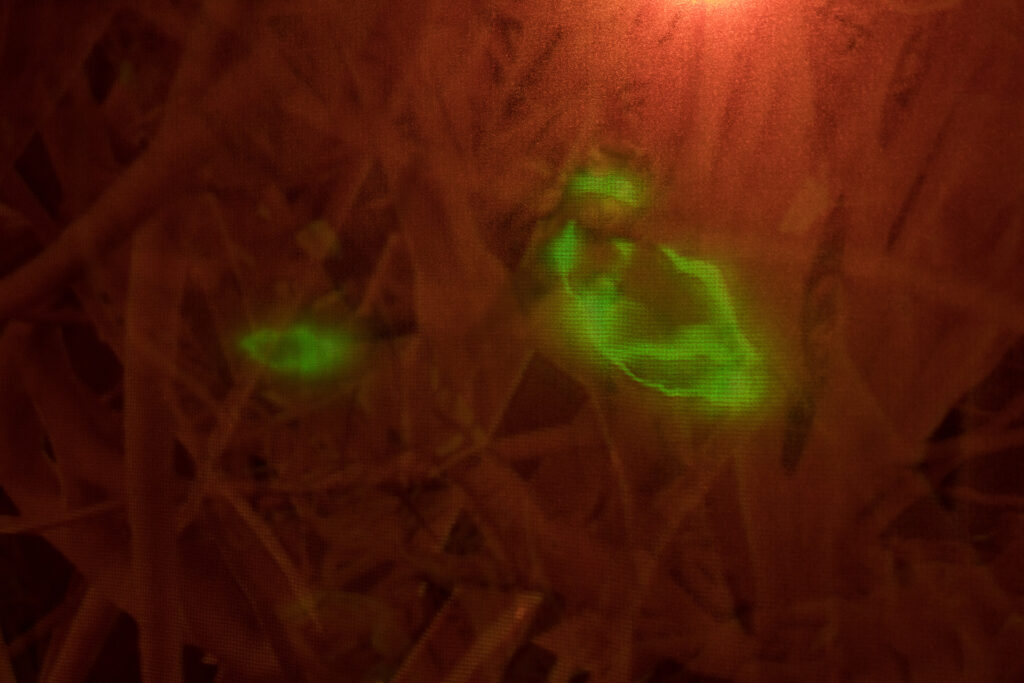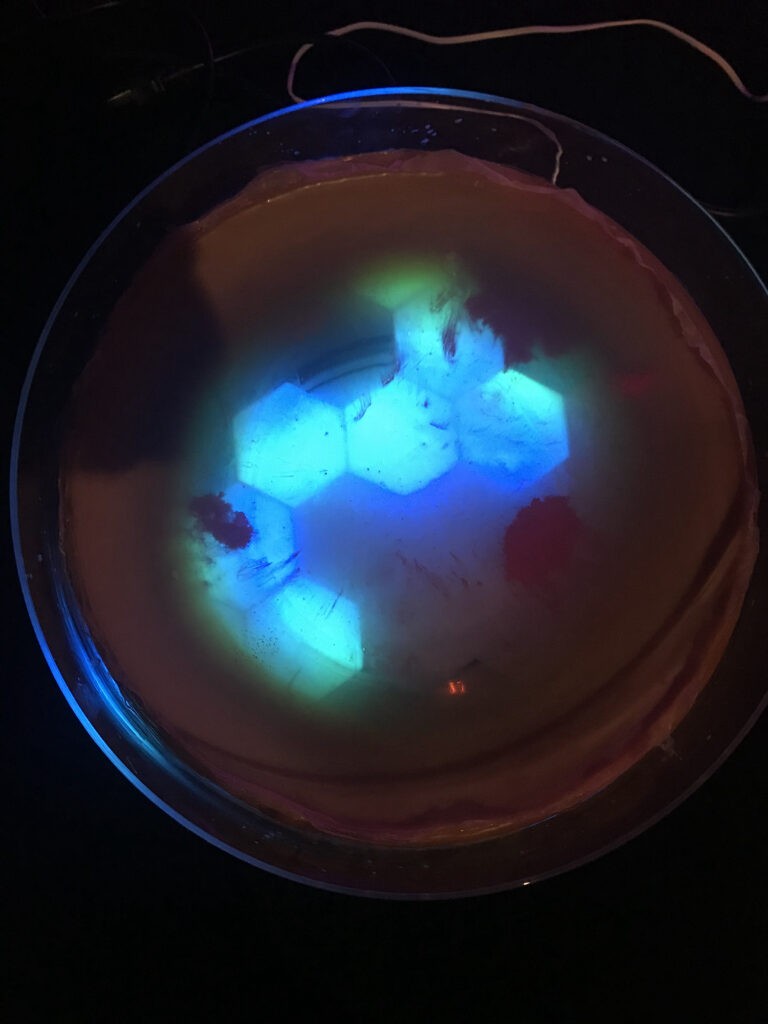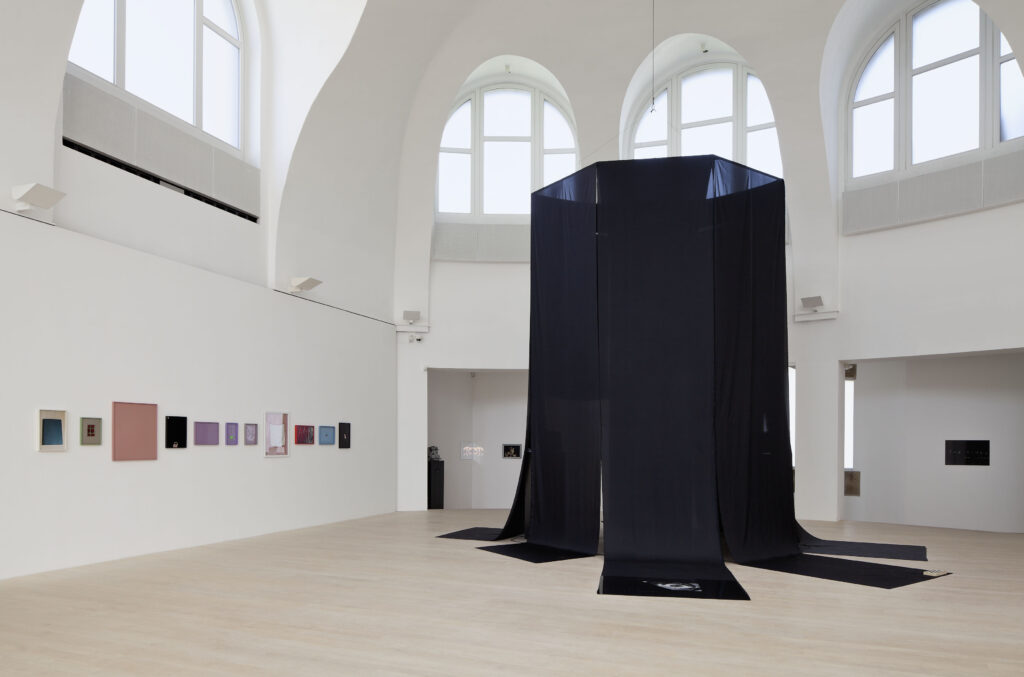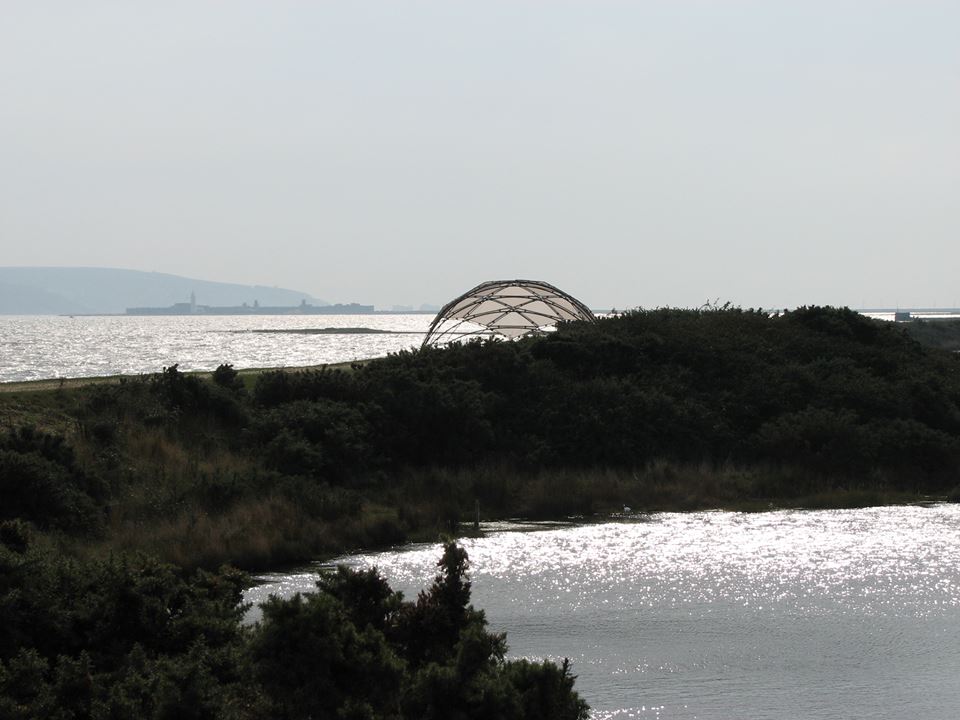Heat in physics — not the tempest on stage for centuries — is the only law that divides the past from the future. And we are not only talking about the climate but about the care-riers: our bodies and the planet. Carriers of the elemental and the particles.
The skin is our interface, an interface that measures: We connect with energy and other beings as well as non-beings and what has been or might be coming through temperature and sensibilities interfaced through the skin as information transfer.
We react with heat to violence and injustice when there are intrusions to the body and to Gaia, mutations and cell deformations. The physis of anything — entangled assemblages, sculpture, data stacks, compost — is formed like a tissue in the matrix of multicellular connections. Nodes, skin, in transition, in transformation
solid/liquid/haze/heat—
—Susanne M. Winterling
A fluorescent bacterium is the protagonist of Susanne M. Winterling’s installation TEMPERATE. Visitors meet the glowing bacterium in an exhibition room heated to body temperature. The bacterium, equipped with a nanobackpack filled with therapeutic agents, is making its way through tissue, just like in a video game.
Inspired by, among other things, pathbreaking research in biomedical technology, which for years has worked to develop drug-loaded nanocarriers, Winterling effects a radical change in perspective on nano-organisms. These entities that are invisible to the naked eye are the stars of TEMPERATE: Magnified many times over and larger than the exhibition visitors, the luminescent bacterium is moving across two monumental projection surfaces, complementing the scientific view, which, based on microscopic images, resonates in other works featured in the exhibition.
Similar to earlier works such as Planetary Loop of Gravitation (2018), where Winterling populated the exhibition space with pulsating, 3-D animated replicas of marine single-cell organisms, so-called dinoflagellates, TEMPERATE once again creates a visual system that reimagines the relationship between man and microorganism. The artist sees the production of such systems as a fundamental prerequisite for promoting a non-anthropocentric view of nature and the environment and creating awareness for the complex, fruitful, and productive relationship between the two life forms.
The exhibition was developed in cooperation with Simone Schürle, a biomedical engineer and professor for Responsive Biomedical Systems at ETH Zurich and her team, including Daphne Asgeirsson, Tinotenda Gwisai, Simone Hersberger, Nima Mirkhani, Anna Scheeder, Thuy Trinh Nguyen, and Thomas Valentin. Additionally, the artist would like to thank Bjørnar Sporsheim and the Department of Clinical and Molecular Medicine, Cellular & Molecular Imaging Core Facility at the Norwegian University of Science and Technology (NTNU).
